3D Concrete Printing at the Heart of Research: The BCRC at the Forefront
Because 3D concrete printing can also serve as a powerful research tool, the Belgian Ceramic Research Centre (BCRC) has taken a closer look at this innovative technology. As a research, expertise, and analysis center specializing in ceramics, the BCRC has set itself the challenge of combining tradition and new technologies by integrating 3D concrete printing into its work. Sandra Abdelouhab, Program Manager for “Refractory and Clay-Based Materials,” shares her experience with the MiniPrinter and presents the center’s current projects and future outlook.
Published on 3 September 2025
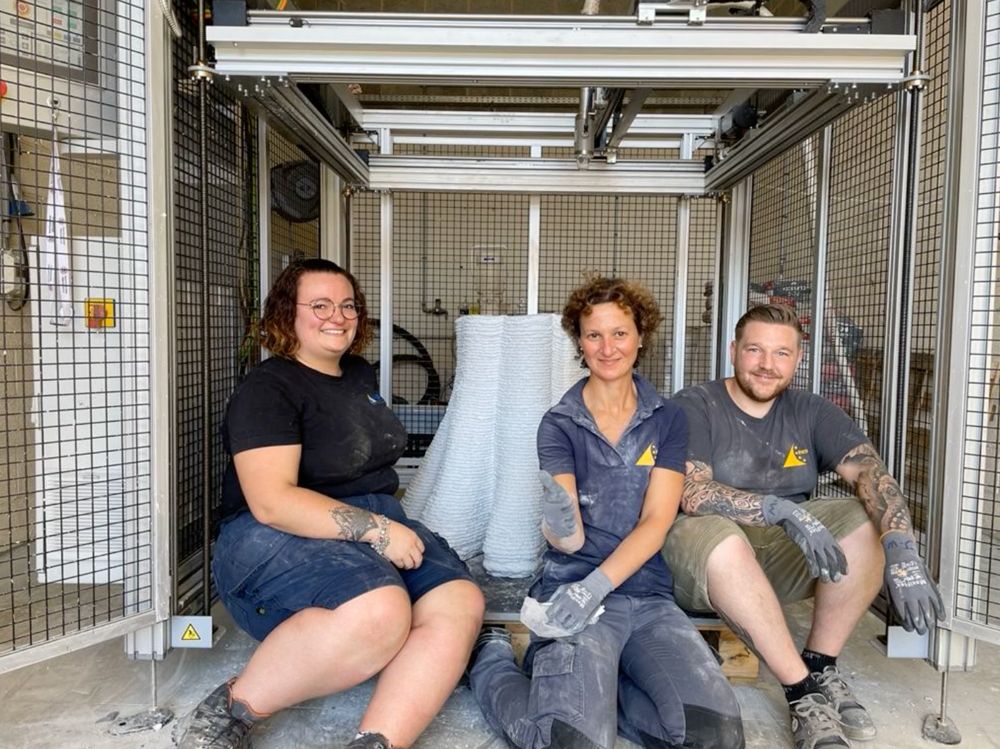
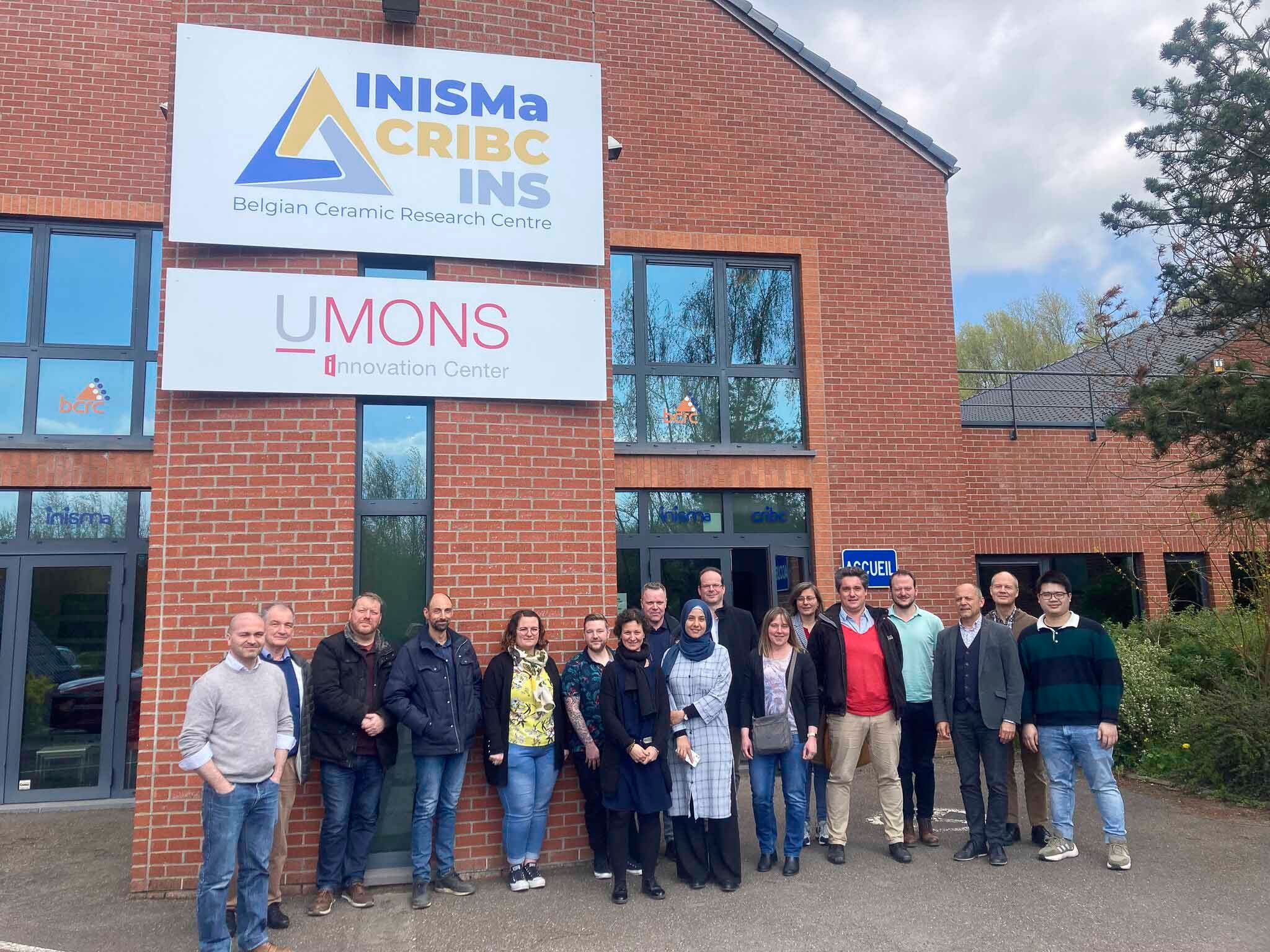
Focus on the BCRC and Its Use of the MiniPrinter in Research
Based in Mons, Belgium, the BCRC is recognized for supporting industries and companies in the research and development of ceramic, refractory, and glass materials.
To meet the challenges posed by new technologies, the center provides its scientific expertise and research laboratories to serve the needs of professionals in the field.
To better understand the current challenges, Sandra Abdelouhab reflected on her experience and role within the organization. Leading research and innovation projects that bridge material science and industrial needs, she works on developing sustainable formulations and implementing innovative processes.
Her mission? To turn research into practical, competitive solutions and guide the industry toward sustainable progress.
With the rapid advancements in 3D concrete printing in recent years, it was only natural for Sandra to turn to this new technology. Combining agility, energy efficiency, and virtually limitless design possibilities, 3D printing quickly won over Sandra and her colleagues. They soon succeeded in integrating 3D printing into their research and development work.
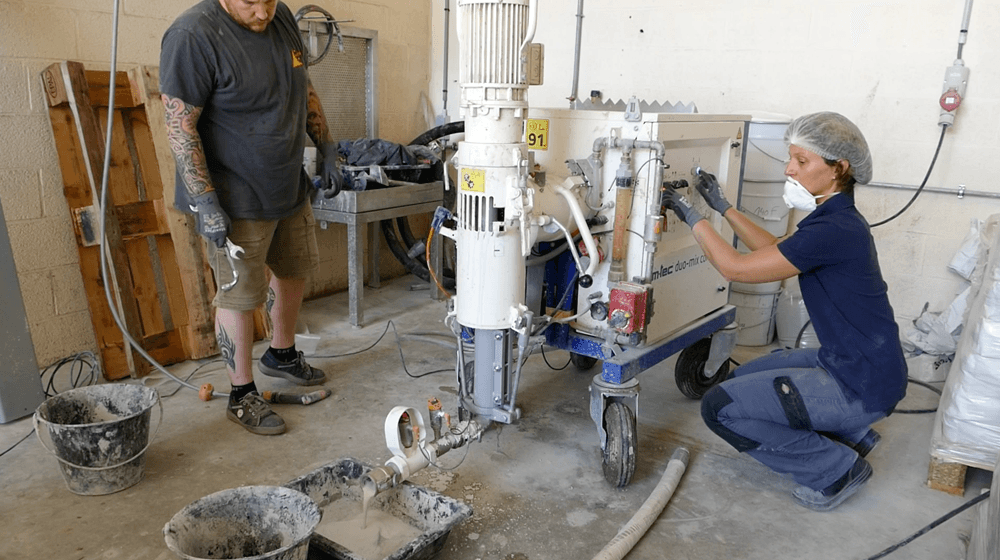
A Technological Shift Turned into a Strategic Advantage
In 2022, the BCRC took the leap and acquired the MiniPrinter as part of the collective research project Bextrus. Supported by the Walloon Region, the center’s mission was to demonstrate the importance of developing formulations tailored to 3D printing for both the construction and refractory materials sectors.
Why Choose the MiniPrinter?
Its versatility, ease of use, and intermediate scale—bridging the gap between laboratory and industrial levels—were major factors in choosing the printer. The MiniPrinter quickly proved to be a strategic tool for the project thanks to its speed and efficiency.
Today, it plays a key role in developing printable refractory ink formulations. It allows the center to test the printability of each formulation at a pilot scale, explore new geometries, and validate designs before scaling up to larger equipment.
According to Sandra, “it’s an agile tool, perfectly suited for experimentation and training.”
The geographical proximity and responsive, efficient after-sales service provided by Constructions-3D were also decisive and reassuring factors for the BCRC.
The MiniPrinter at the Heart of Major Technological Advancements
After acquiring the MiniPrinter, the BCRC embarked on an ambitious first project: the development of printable refractory inks.
While learning to master the machine, the teams successfully formulated a mixture containing aggregates up to 3 mm in size.
With the Bextrus project, the Belgian research center was able to go even further by adapting the machine and its capabilities to its specific needs.
More than just a tool, the MiniPrinter has become essential to their research efforts and the development of printable refractory inks — a true technological breakthrough for the sector and an undeniable success.
Application and Feedback
Between flexibility, sustainability, and collective intelligence, the benefits of the MiniPrinter are numerous.
First, the Technical Benefits
Indeed, the use of the MiniPrinter offers several concrete technical advantages. Above all, it enables rapid validation of formulations, providing a significant time-saving advantage for the team in developing new solutions. It also offers true design flexibility, allowing the testing of different inks and geometries.
During these experiments, the BCRC identified numerous long-term benefits. This technology is expected to reduce raw material consumption, costs, and construction waste, while also helping to address the shortage of skilled labor in the construction and refractory materials sectors, particularly in specialized applications such as industrial furnaces and high-temperature reactors.
Although 3D concrete printing is user-friendly, mastering it takes time. The training provided by Constructions-3D helps users understand the machine’s basic operation, but full proficiency requires hands-on experience and regular use. It’s a machine that must be understood, practiced, and adapted to.
As Sandra explains:
“Fully mastering it requires practical experience and a deep understanding of formulation and 3D printing. It’s this combination that allows users to get the most out of the printer and respond effectively to technical issues, such as clogging or inconsistent mix quality.”
Controlling water flow can sometimes be challenging, but thanks to continuous software updates from the Constructions-3D team, the MiniPrinter constantly improves, adapting to users’ needs and evolving in real time.
In summary, the MiniPrinter is a true asset for the BCRC research teams. It accelerates prototyping, strengthens industrial partners’ confidence by enabling rapid validation of new concepts, and serves as an invaluable ally for conducting exploratory tests with controlled costs and timelines.
Eco-Responsible
Beyond its technical aspects, the MiniPrinter also enables the exploration of more sustainable solutions: reducing cement content through the use of alternative binders, integrating recycled materials, and promoting off-site manufacturing.
It fully aligns with the major transitions toward a circular economy and the digitalization of the construction sector, while also addressing the shortage of skilled labor.
And Collaborative
The acquisition of such equipment has fundamentally transformed the way the BCRC works.
According to Sandra, Program Manager, “within our team, we are fully satisfied with the acquisition of this equipment and the results achieved.”
The MiniPrinter naturally encourages collaborative work—its use strengthens team spirit and promotes sharing, whether it involves successes or challenges. The team has also noticed strong interest from their partners; the machine sparks curiosity and enthusiasm.
As a genuine selling point, it has already attracted attention from several SMEs as well as a major Japanese company, both of which have expressed interest in potential collaborations with the BCRC on the topic of 3D printing with refractory concrete.
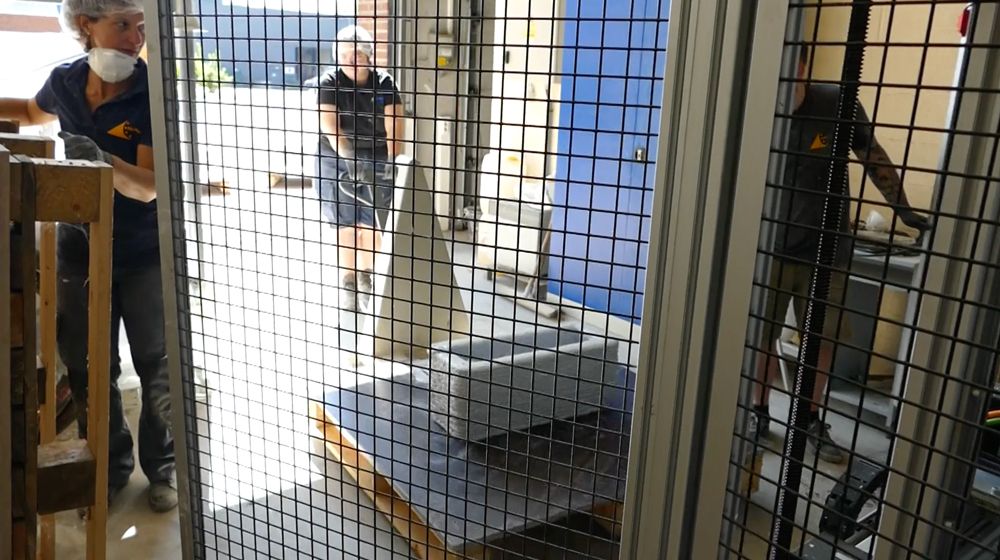
What’s Next? A Vision for the Future
A Clear Future Ahead for the BCRC and the MiniPrinter
Already seen as a revolution in the construction sector, the use of 3D concrete printing remains limited—especially in the refractory materials field. In this context, the BCRC aims to position itself as a leading player, supporting construction professionals who are adopting these new practices. Although the sector is still cautious, a transition to these technologies seems inevitable. It will take time and guidance, and the BCRC intends to actively help accelerate it.
In parallel, several projects are underway or in preparation. Building on the BEXTRUS project, the research center launched the cross-border 3DFORMWORKS project in October 2024, conducted between France and Belgium and funded under the Interreg FWVl program. The goal is to develop low-carbon 3D printing solutions by using alternative binders and recycled aggregates. As part of this effort, the MiniPrinter will soon be equipped with new options to improve ergonomics, mix consistency, and purging, to better meet formulation needs and the production of demonstrators. A Slovak SME has also approached the Belgian center to form a consortium with a Czech university to develop a refractory ink and manufacture prefabricated parts for the steel industry.
The future looks bright—and busy—with projects for Sandra Abdelouhab and her team, not to mention the MiniPrinter.
“With the MiniPrinter, let’s show how additive manufacturing can change the game in the world of refractories!” — Sandra Abdelouhab
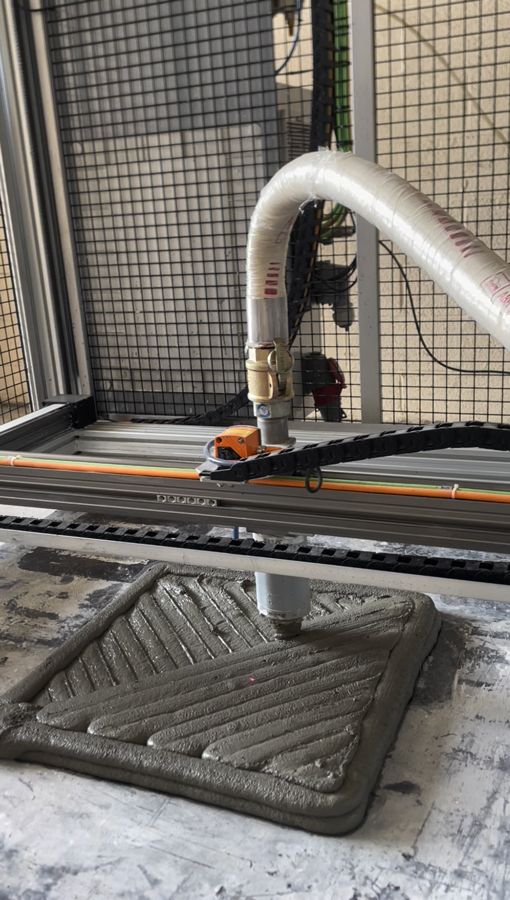
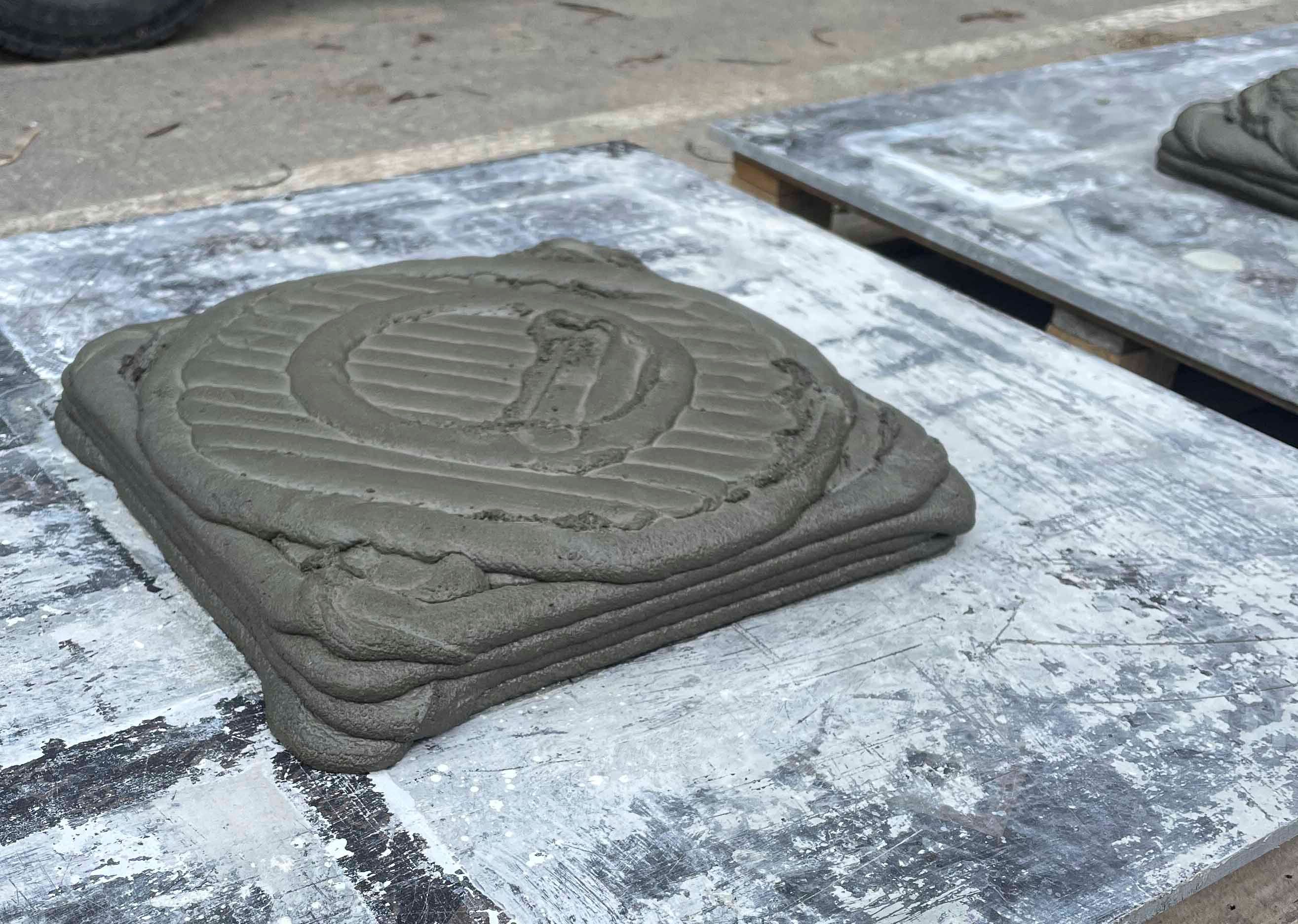
Ask your questions about concrete printing and our products...








